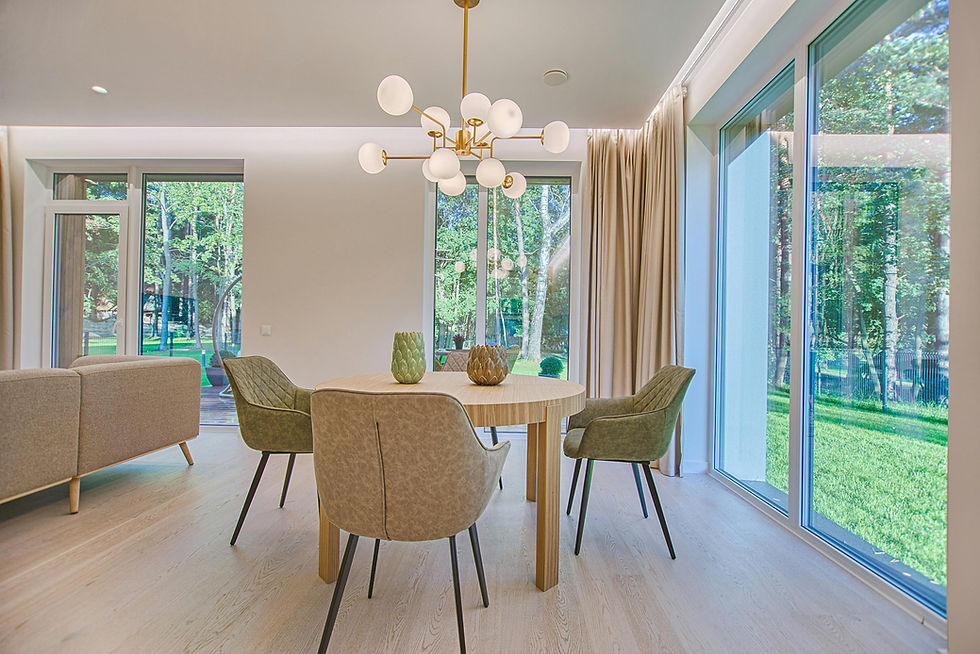The Allure of the Unseen: Crafting Aesthetic and Practical Secret Passages in Your Home
- Elevated Magazines

- Aug 24
- 4 min read

The notion of a secret passage, a hidden realm within our own homes, has captivated the human imagination for centuries. From the clandestine escapes of medieval castles to the whimsical wonder of children's literature, the allure of a space known only to a select few is undeniable. But beyond the realm of fiction, the incorporation of secret passages and hidden rooms into modern architecture has become a fascinating design trend that blends artistry with functionality. This guide will explore the practical and aesthetic considerations of creating these enigmatic spaces, the technical options available, the inherent challenges, and the legal landscape in the United States.
Designing the Hidden: From Concept to Creation
The key to a successful secret passage lies in its seamless integration with the existing design of a room. The entrance must be so cleverly disguised that it becomes an organic part of the decor. One of the most classic and effective methods is the bookshelf door. A section of a built-in bookcase, complete with books and decorative objects, can be hinged to swing inward, revealing the hidden space beyond. For a more modern aesthetic, consider the use of sliding panels. As detailed in these design tips for incorporating sliding doors into your home, a large piece of art or a full-length mirror can be mounted on a sliding track, gliding aside to grant access. The options are as varied as one's imagination, ranging from false walls and hidden hatches in the floor to secret panels within a fireplace or behind a large, decorative puzzle with pieces that are permanently fused together to form a single, solid panel.
The Art of Misdirection: Hiding in Plain Sight
For the truly audacious designer, the principle of "hiding in plain sight" offers a unique avenue for concealment. Imagine a room that embraces a maximalist aesthetic, a space so deliberately overcrowded with art, antiques, and curiosities that it borders on a personal funhouse, like in a set of the 1960s TV show 'The Wild Wild West'. This approach relies on overwhelming the senses with opulent, yet deceptive, interiors where any object could conceal a hidden mechanism. In such a visually rich and chaotic environment, the seams of a secret door or the outline of a trapdoor become just another detail in a sea of distractions. A trapdoor in the floor could be hidden beneath an ornate Persian rug, which is itself partially covered by a collection of mismatched furniture and towering sculptures. The entrance isn't just covered; it's lost in the curated clutter, making the discovery all the more surprising, much like the unexpected design elements one might encounter in the Gucci boutique in SoHo.
Technical Options and Design Variations
The technical execution of a secret passage can range from the simple to the complex, depending on the desired level of secrecy and the available budget.
Hinged Panels: This is the most straightforward approach, often used for bookcase doors or wall panels. High-quality, concealed hinges are essential to maintain the illusion.
Sliding Mechanisms: For a more contemporary feel, sliding tracks can be used to move a wall section, a mirror, or a piece of artwork. These can be manually operated or motorized for a more dramatic effect.
Pivoting Walls: A more complex and impressive option involves a section of wall that pivots on a central axis. This requires careful engineering to ensure smooth and silent operation.
Hydraulic Lifts: For the ultimate in high-tech concealment, hydraulic lifts can be used to raise or lower a section of the floor, revealing a hidden staircase or room below.
Challenges and Legal Considerations in the US
While the idea of a secret passage is romantic, its implementation comes with a set of challenges and legal obligations. The most significant of these is ensuring compliance with US building codes. These regulations are in place to guarantee the safety of a home's occupants and cannot be overlooked.
Navigating Building Codes
Local building codes vary by municipality, but they consistently address several critical safety areas that directly impact secret passage design. Under both the International Residential Code (IRC) and International Building Code (IBC), the following requirements are non-negotiable:
Ventilation: Any habitable space, hidden or not, must have adequate ventilation to ensure air quality.
Emergency Egress: In the event of a fire or other emergency, there must be a clear and accessible path to an exit. A secret room cannot be a dead end; it must have a secondary means of escape that meets code requirements.
Structural Integrity: The creation of a secret passage must not compromise the structural integrity of the building. This is particularly important when modifying load-bearing walls or floors. It is crucial to consult with a structural engineer to ensure that any alterations are safe and sound.
Lighting: Adequate lighting is essential for safety and functionality within a secret passage or room.
Ultimately, the creation of a secret passage is a journey into the heart of architectural creativity, a chance to imbue a home with a sense of mystery and wonder. By carefully considering the design, the technical execution, and the legal requirements, you can create a space that is not only aesthetically pleasing and practical but also a source of endless fascination and delight.
